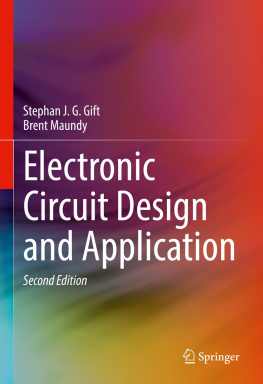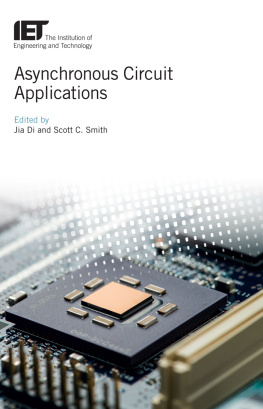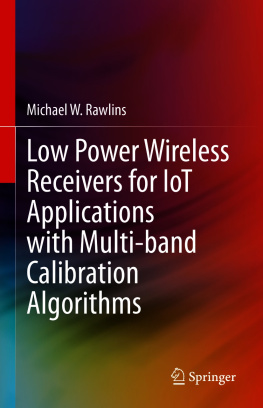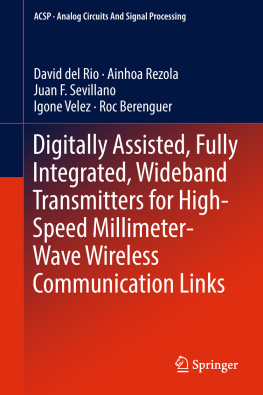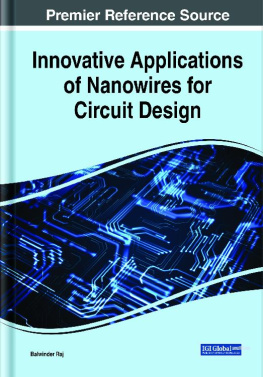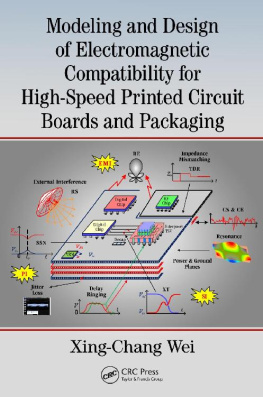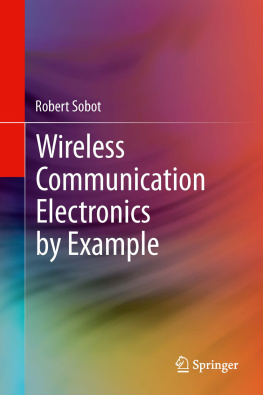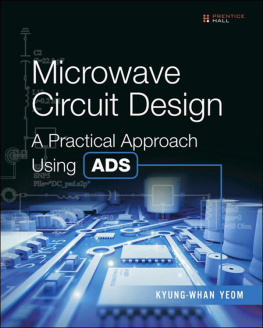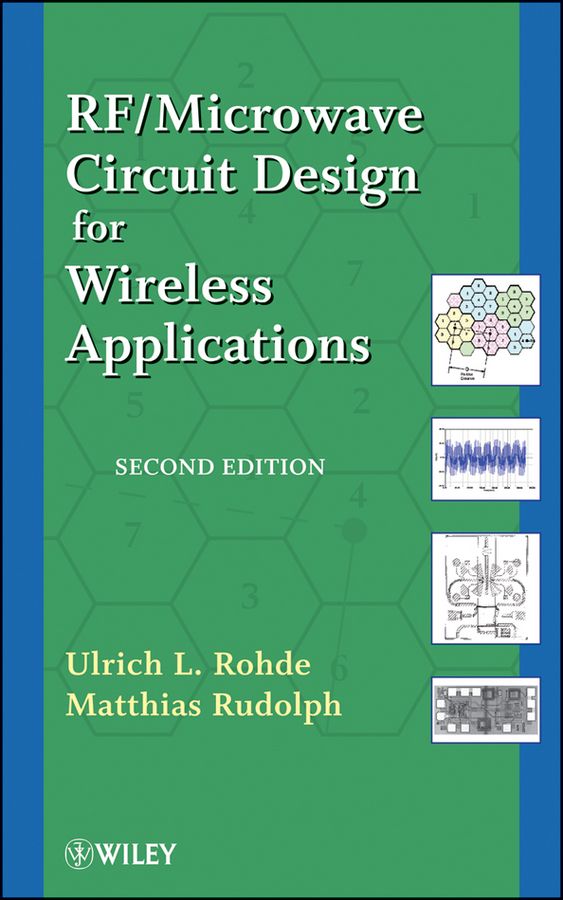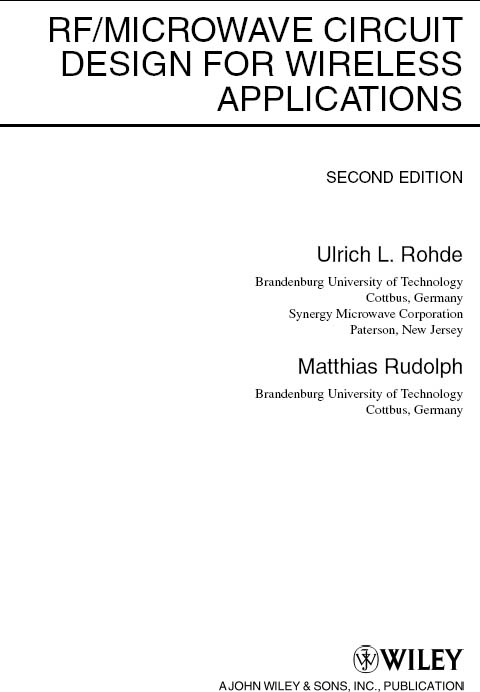Contents
Copyright 2013 by John Wiley & Sons, Inc. All rights reserved.
Published by John Wiley & Sons, Inc., Hoboken, New Jersey.
Published simultaneously in Canada.
No part of this publication may be reproduced, stored in a retrieval system, or transmitted in any form or by any means, electronic, mechanical, photocopying, recording, scanning, or otherwise, except as permitted under Section 107 or 108 of the 1976 United States Copyright Act, without either the prior written permission of the Publisher, or authorization through payment of the appropriate per-copy fee to the Copyright Clearance Center, Inc., 222 Rosewood Drive, Danvers, MA 01923, (978) 750-8400, fax (978) 750-4470, or on the web at www.copyright.com . Requests to the Publisher for permission should be addressed to the Permissions Department, John Wiley & Sons, Inc., 111 River Street, Hoboken, NJ 07030, (201) 748-6011, fax (201) 748-6008, or online at http://www.wiley.com/go/permission .
Limit of Liability/Disclaimer of Warranty: While the publisher and author have used their best efforts in preparing this book, they make no representations or warranties with respect to the accuracy or completeness of the contents of this book and specifically disclaim any implied warranties of merchantability or fitness for a particular purpose. No warranty may be created or extended by sales representatives or written sales materials. The advice and strategies contained herein may not be suitable for your situation. You should consult with a professional where appropriate. Neither the publisher nor author shall be liable for any loss of profit or any other commercial damages, including but not limited to special, incidental, consequential, or other damages.
For general information on our other products and services or for technical support, please contact our Customer Care Department within the United States at (800) 762-2974, outside the United States at (317) 572-3993 or fax (317) 572-4002.
Wiley also publishes its books in a variety of electronic formats. Some content that appears in print may not be available in electronic formats. For more information about Wiley products, visit our web site at www.wiley.com .
Library of Congress Cataloging-in-Publication Data:
Rohde, Ulrich L.
RF/microwave circuit design for wireless applications / Ulrich L. Rohde, Matthias Rudolph. 2nd ed.
p. cm.
ISBN 978-0-470-90181-6 (hardback)
1. Microwave integrated circuitsComputer-aided design. 2. Wireless communication systemsEquipment and suppliesDesign and construction. 3. SemiconductorsComputer-aided design. 4. Microwave circuitsDesign and construction. 5. Radio frequency integrated circuitsDesign and construction. I. Rudolph, Matthias, 1969-II. Title.
TK7876.R65 2013
621.381'32dc23
2012013020
To Professor Vittorio Rizzoli
Foreword
Twelve years have passed since the publication of the first edition of RF/Microwave Circuit Design for Wireless Applications . Year 2000 was still the dawn of the wireless era; mobile telephony was about to change from highly expensive business equipment to a common ubiquitous consumer article. Chipsets for WiFi and GPS were available or under development but still to be deployed on the mass market. To remember those days, we kept the statement on the first page of the first chapter, saying that we concluded that 30% of the passengers waiting at an airport were on the air. Today, I would expect this number to be well beyond 100%, accounting for people being connected to the Internet by multiple devices while talking on their cell phone.
Other changes are also obvious requiring the book to be enhanced and partly rewritten. Semiconductor technology and device modeling have advanced rapidly. The first edition still discussed GaAs MESFET as an important device, and stated that CMOS is still too slow for wireless applications. Therefore, this edition had to account for these advances, and now discusses CMOS and CMOS circuits, BiCMOS, and HBTs on GaAs and SiGe, as well as GaN HEMTs.
It also happened in the last 15 years that the semiconductor branches of the major technology companies became independent companies. Just to name a few: chip-makers Siemens, Motorola, Philips, and Hewlett-Packard are now Infineon, Freescale, NXP, and Avago. On the other hand, most of the circuit design principles did not change much. We decided in many cases to rely on the same commercial circuit examples that were already discussed in the first edition. The majority of the example products are still on the market.
This book also discusses the GSM concept in detail. Important highlights in this new edition are power amplifiers with linearization. (This topic is discussed in great detail.) In addition to this, nonlinear noise in mixers and oscillators are new topics as is the treatment of nonlinear noise in cross-coupled oscillators that play an important role, and these have been covered as outlined above. The majority of the chapters have been updated, but the topics listed above are all new and fully covered.
Last but not the least, there was a change in the authors of this book. Author David P. Newkirk, whose valuable language skills as a technical writer ensured the high quality of the first edition, was unavailable for the second edition. However, I was fortunate to have Dr.-Ing. Matthias Rudolph join me in the revision of this book. He had a solid background in microwave engineering at Ferdinand Braun Institut in Berlin, Germany where he was in a management position responsible for device modeling and low-noise components. In the fall of 2009, he was appointed the Ulrich-L.-Rohde tenure-tracking Professor for RF and Microwave Techniques at Brandenburg University of Technology, Cottbus, Germany. His experience and dedication to this effort gives this new edition of the book an exceptionally wide base.
Finally, I would like to appreciate the support from the numerous companies and individuals that allowed us to use their images, datasheets, and technical papers as examples. Special thanks also to our publisher John Wiley & Sons, especially to George Telecki for his ongoing support and his patience.
Ulrich L. Rohde
Marco Island, Florida
Fall 2012
Preface
When I started 2 years ago to write a book on wireless technologyspecifically, circuit designI had hoped that the explosion of the technology had stabilized. To my surprise, however, the technology is far from settled, and I found myself in a constant chase to catch up with the latest developments. Such a chase requires a fast engine like the Concorde.
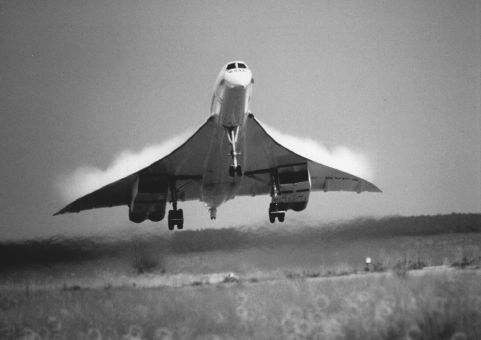
In the case of this somewhat older technology, speed still has not been surpassed by any other commercial approach. This tells us there is a lot of design technology that needs to be understood or modified to handle today's needs. Because of the very demanding calculation effort for the circuits, this book makes heavy use of the most modern CAD tools. Hewlett-Packard was kind enough to provide us with a copy of their advanced design system (ADS), which also comes with matching synthesis and a wideband CDMA library. Unfortunately, some of the mechanics of getting us started on the software collided with the already delayed schedule of this book, and we were only in a position to reference their advanced capability and not really demonstrate it. The use of this software, including the one from Eagleware, which was also provided to us, needed to be deferred to the next edition of this book. To meet time constraints and give a consistent presentation, we decided to stay with the Ansoft tools. One of the most time-consuming efforts was the actual modeling job, since we wanted to make sure all circuits would work properly. There are too many publications showing incomplete or nonworking designs.


